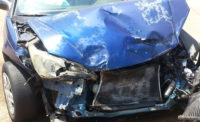The NIOSH Center for Motor Vehicle Safety (CMVS) is taking up the challenge of communicating to employers and workers about the risks of driving for work and how to avoid motor vehicle crashes. Crash risk affects workers in all industries and occupations, whether they drive tractor-trailers, cars, pickup trucks, or emergency vehicles, and whether driving is a primary or occasional part of the job. Because of the diversity of these work settings, one size does not fit all when it comes to either research or communication. Striking a balance, the CMVS prioritizes workers who are at highest risk for crashes and injuries—truck drivers, emergency responders, and oil and gas workers—while at the same time accommodating the wide range of other employers and workers who need motor vehicle safety information.
Research from the CMVS feeds directly into recommendations for policy and practice. Taking the time to understand the work environment—for example, organizational dynamics, work patterns, and employment arrangements—helps us to ask the right questions and increases the chances that our findings will reduce crashes and injuries. Throughout a research project, we engage with participating companies, employers and their organizations, workers and their representatives, and others who have an interest in the work. We come to understand the attitudes that shape safety practices, the barriers and incentives to making change through motor vehicle safety interventions, and the specialized language that will make our communications credible. Our interaction with the law enforcement community is a good example of this at work. The CMVS is developing a motor vehicle safety messaging toolkit for law enforcement officers, the tone and language of which reflects what motivates police to adopt safe driving habits. Qualitative data from interactions with law enforcement officers by a NIOSH researcher and health communicator, in addition to a review of the toolkit by a police department, informed the “others first” perspective woven throughout toolkit messaging.
The CMVS recently sponsored several focus groups that explored the varying communication needs of companies whose workers drive on the job. With a focus on small businesses, participants came from four industry segments: trucking, oil and gas, emergency response, and employers from other industries whose workers drove light vehicles. The results showed the importance of developing products tailored to the needs of each audience. In work settings such as emergency response or oil and gas, employers wanted materials that acknowledge the specialized nature of workplace driving in their industry and speak to them using familiar terms. On the other hand, the focus-group participants whose workers operated light vehicles asked for more materials to help them understand how to start and sustain a motor vehicle safety program. By communicating to both specialized and general audiences, the CMVS will continue to meet the needs of all who drive for work and their employers.
The CMVS team is learning that it’s not just what is presented that matters—it’s also how the message is delivered. The focus-group results are helping the team to better structure its communication approaches to meet the needs of a more mobile workforce that has less time to digest safety materials. Across all the industry groups that participated, employers suggested that CMVS materials for workers be interactive, concise, and limited to one topic at a time; use more graphics; reinforce information presented earlier; and lend themselves to peer-to-peer learning. Employers expressed that they, as managers, would also be drawn to more visually engaging materials that delivered the necessary information using as few words as possible.
Moving forward, the CMVS is committed to research that will lead to science-based recommendations on how to prevent motor vehicle crashes at work and to communication products that will present safety information that is engaging, concise, and easy to understand. Stay updated on CMVS progress and communication products by subscribing to Behind the Wheel at Work eNewsletter, following @NIOSH_MVSafety on Twitter, and visiting Motor Vehicle Safety at Work for existing resources.






